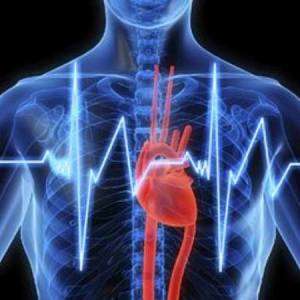Perhaps you remember that the last October-17-2014, I published a post with a news that said the following: “Spanish scientists show that lood cells from a patient with myocardial can regenerate it”. Well, but today, I want tell you that, the last Thursday-29, I think, I could read another news that said: “A Spanish pioneer therapy uses cardiac stem cell from donors to treat heart attacks”.
I think that it is a very important news, an important breakthrough, because heart attack is the “second leading cause of death worldwide”.
The Universitary General Hospital “Gregorio Marañón”, in Madrid, heads a pioneer in human therapy, using allogeneic cardiac cells, ie from donors, to repair damaged tissue of a patient, after suffering a large acute myocardial infarction.

A heart beats on
In this first human clinical trial will be treated to 55 patients , although, by the moment, it has intervened on seven. Their evolution, which is very favorable, has shown that these cells can be administered, safely and easily, on patients in a serious situation.
The trial was presented the last Friday, by the Minister of Health of the Community of Madrid, Javier Maldonado; the chief of cardiology of the hospital, Francisco Fernández-Avilés, plus the exMinister, Cristina Garmendia (president of the company Genetrix, group that developed the study of these cells, which may be available, when the patient needs) .
Donor cells are obtained from heart tissue, discarded during surgery, as valvular surgery, and they are expanded, in laboratory, to get the required of 35 million of dose per patient.
An amount that seems very bulky, but not if you consider that from a biopsy, hundreds of millions of cells are removed, which, according Garmendia, "it takes very few donor biopsies, to have a very good expansion of them". Specifically, for the test, they were necessary only three.
The patient profile is that of a person, who has suffered a major myocardial infarction, with severe impairment of cardiac tissue and increased risk of heart failure. This type of infarcted represent 20% of the total.
The ideal time, to first be given cells, is between the fifth and tenth day, after suffering this episode, in the heart, when his clinical situation has stabilized.
"It is very attractive able to do it, immediately after suffering a myocardial --Fernández-Avilés has commented--; but, today, we dare not, because it is a very hostile environment, for the cells, by inflammation".
The cells are administered, to the patient, intracoronary, with a procedure similar to that used to put a stent, with a very small and squishy catheter, that produces no mechanical damage, according to experts.
The Chief of Cardiology has clarified that, this treatment "is not to treat heart failure; but it is to prevent and it intended act, upon the size of the scar and the evolution of form and function of the left ventricle".
If the study evidences that it can be obtained shrink the scar and evolve favorably the left ventricle, "it will happen a tremendous impact, on the risk of developing heart failure, in the next three to five years".
This can be analyzed, at the conclusion of the clinical trial, with 55 patients, which could be at the end of 2016. The therapy, in principle, would not be effective, in patients, who already have a chronic alteration of cardiac tissue.
According to the expert, "the more one acute episode away, the possibility that cells alone do something decreases in a fast way". To this circumstance, what would it work would be an alternative to transplantation.
The trial has been endorsed by the European Commission, through the project called “Caremi”, in which more than twenty European entities are involved.
In the study, also collaborate other health institutions, such as the Hospital of Navarra, University of Donostia, the University Clinic of Valladolid, the Vall d'Hebron (Barcelona) and the University of Salamanca, Virgin of the Victory, in Malaga and Valencia.
Also the “La Fe” Foundation, the Center for Minimally Invasive Surgery “Jesus Uson” (Cáceres), the Catholic University of Leuven (Belgium) and Saint Louis in Paris.
Well, I hope that you have liked this news, such as I did.
Until my next post, kind regards,
Luis.
Sponsored by Costaluz lawyers.
Please click below:
